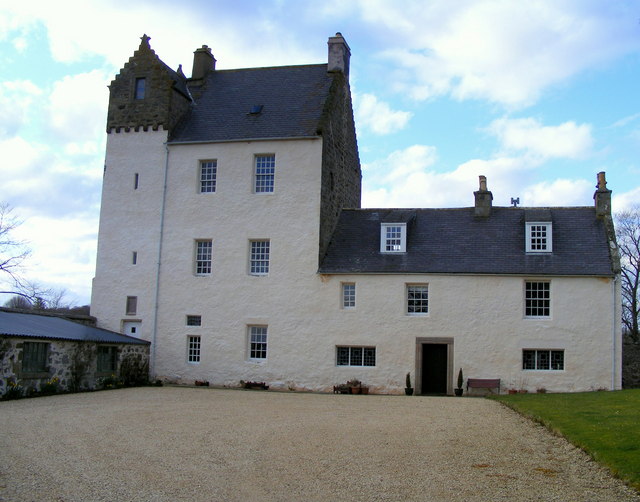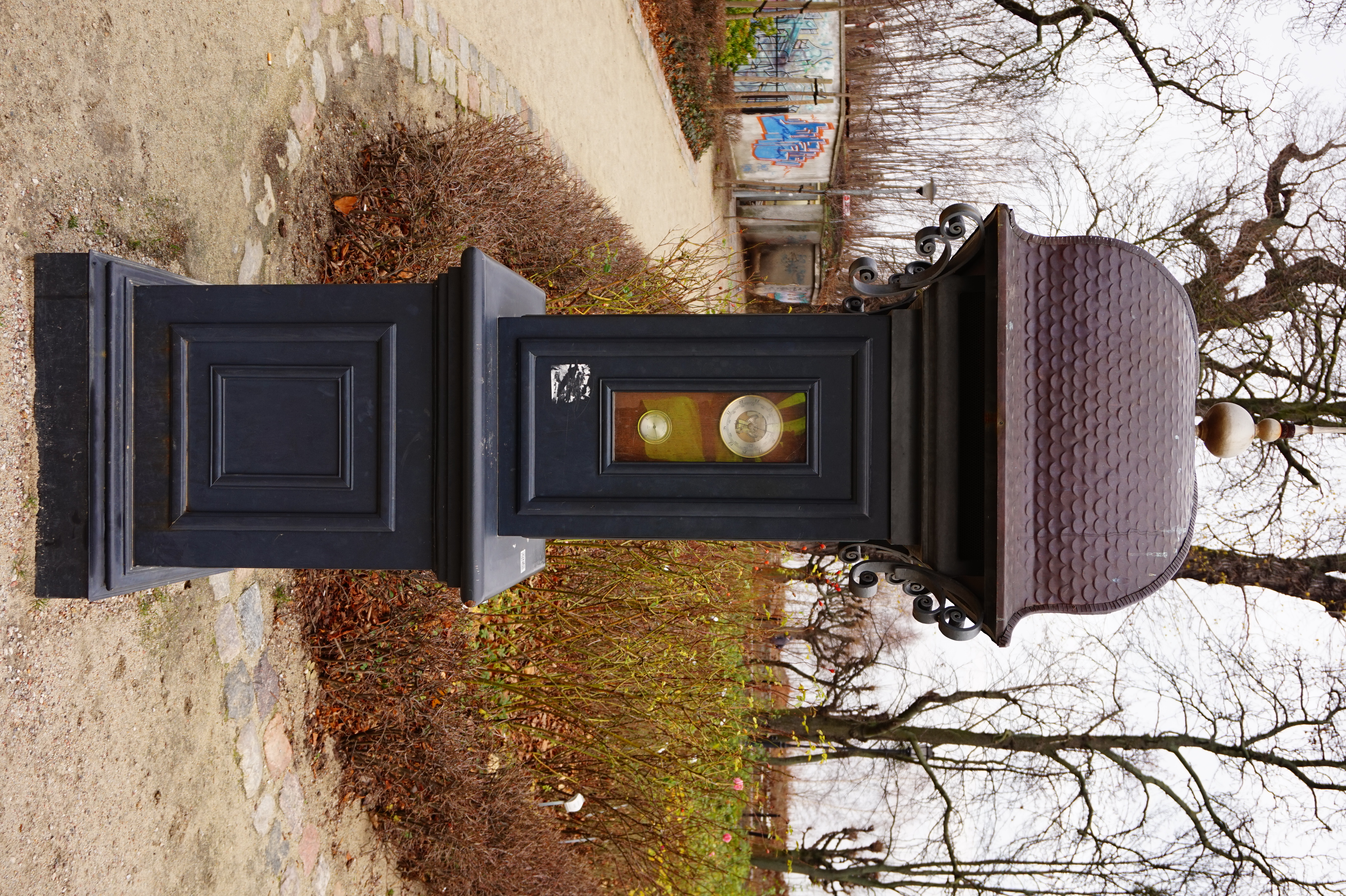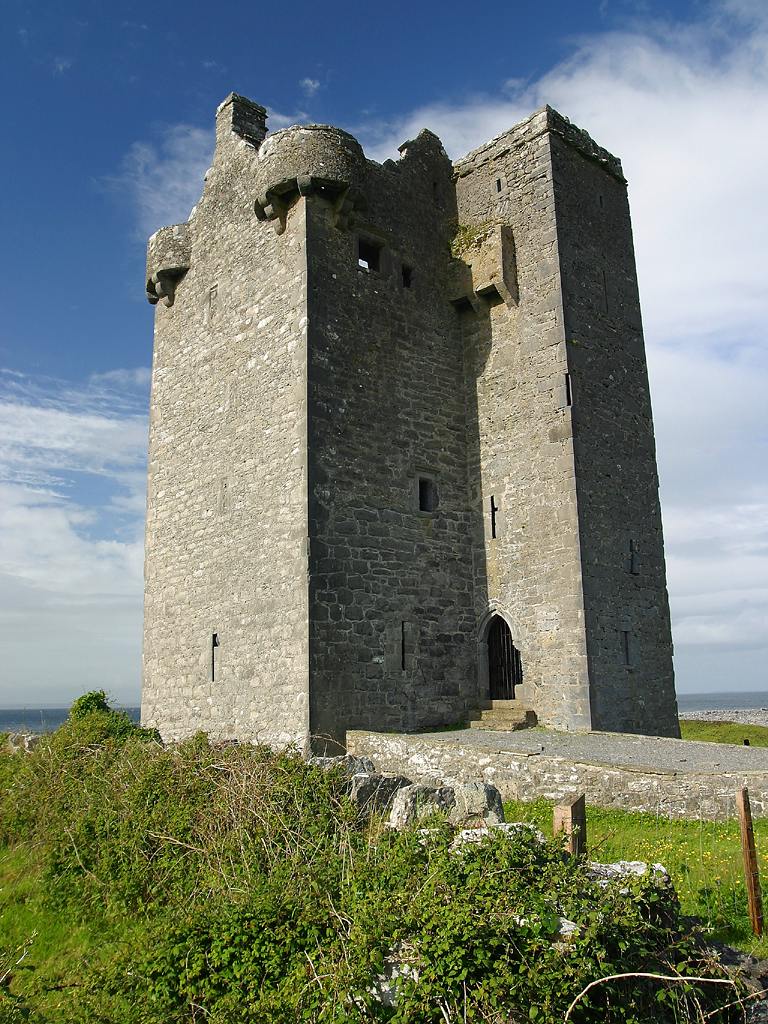|
Kinnairdy Castle
Kinnairdy Castle is a tower house, having five storeys and a garret, two miles south of Aberchirder, Aberdeenshire, Scotland.Lindsay, Maurice (1986) ''The Castles of Scotland''. Constable. p. 317 The alternative name is Old Kinnairdy. History The castle is built on land that belonged to the Innes family from the late 14th century; an earlier tower was probably built in about 1420, which replaced a wooden motte and bailey structure. The castle was sold by the Innes family to Sir James Crichton of Frendraught in 1629. Subsequently it came to the Reverend John Gregory in 1647, then passed to his brother David, a doctor who has been claimed to be the constructor of the first barometer. David's success in forecasting the weather with the help of the barometer led to his being accused, but not convicted, of witchcraft. The property was sold by his third son to Thomas Donaldson, a merchant from Elgin, who restored and re-roofed the castle during the eighteenth century, transforming ... [...More Info...] [...Related Items...] OR: [Wikipedia] [Google] [Baidu] |
Aberchirder
Aberchirder ( sco, Fogieloan, Gaelic: ''Obar Chiardair'') known locally as Foggieloan or Foggie, is a village in Aberdeenshire, Scotland, situated on the A97 road six miles west of Turriff. Etymology The name Aberchirder, recorded in c.1204 as ''Aberkerdour'' means 'mouth of the Chirder'. It is formed from the Pictish word ''aber'' 'river mouth' and the stream-name ''Chirder'' which is itself formed from the Gaelic words ''ciar'' 'dark, brown' and ''dobhar'' 'water'.''Ordnance Gazetteer of Scotland: A Graphic and Accurate Description of Every Place in Scotland'' , Frances Hindes Groome (1901), p. 5 This stream name is probably an adaptation of an earlier Pictish name. History The village of Aberchirder was foun ...[...More Info...] [...Related Items...] OR: [Wikipedia] [Google] [Baidu] |
Barometer
A barometer is a scientific instrument that is used to measure air pressure in a certain environment. Pressure tendency can forecast short term changes in the weather. Many measurements of air pressure are used within surface weather analysis to help find surface troughs, pressure systems and frontal boundaries. Barometers and pressure altimeters (the most basic and common type of altimeter) are essentially the same instrument, but used for different purposes. An altimeter is intended to be used at different levels matching the corresponding atmospheric pressure to the altitude, while a barometer is kept at the same level and measures subtle pressure changes caused by weather and elements of weather. The average atmospheric pressure on the earth's surface varies between 940 and 1040 hPa (mbar). The average atmospheric pressure at sea level is 1013 hPa (mbar). Etymology The word '' barometer'' is derived from the Ancient Greek (), meaning "weight", and (), meaning "me ... [...More Info...] [...Related Items...] OR: [Wikipedia] [Google] [Baidu] |
Lord Lyon King Of Arms
The Right Honourable the Lord Lyon King of Arms, the head of Lyon Court, is the most junior of the Great Officers of State in Scotland and is the Scottish official with responsibility for regulating heraldry in that country, issuing new grants of arms, and serving as the judge of the Court of the Lord Lyon, the oldest heraldic court in the world that is still in daily operation. The historic title of the post was the ''High Sennachie'', and he was given the title of Lord Lyon from the lion in the coat of arms of Scotland. The post was in the early nineteenth century held by an important nobleman, the Earl of Kinnoull, whose functions were in practice carried out by the Lyon-Depute. The practice of appointing Lyon-Deputes, however, ceased in 1866. Responsibilities The Lord Lyon is responsible for overseeing state ceremonial in Scotland, for the granting of new arms to persons or organisations, and for confirming proven pedigrees and claims to existing arms as well as r ... [...More Info...] [...Related Items...] OR: [Wikipedia] [Google] [Baidu] |
Sir Thomas Innes Of Learney
Sir Thomas Innes of Learney (1893–1971) was a Scottish officer of arms who was Lord Lyon from 1945 to 1969. He was Carrick Pursuivant and Albany Herald in the 1920s and 1930s. He was a very active Lord Lyon, strongly promoting his views of what his office was through his writings and pronouncements in his Court. In 1950, he convinced the Scots Law Times to start publishing the decisions made in Lyon Court. By ruling on uncontested petitions, he was able to expound many of his theories in court but not under review of his superior court, and get them published in the judicial record. His treatise, ''Scots Heraldry'', was first published in 1934 when he was Carrick Pursuivant; then a second, enlarged edition came out in 1956, and it has practically eclipsed earlier works on the subject. Following his retirement as Lord Lyon in 1969, he was appointed Marchmont Herald, and continued as Secretary of the Order of the Thistle The Most Ancient and Most Noble Order of the T ... [...More Info...] [...Related Items...] OR: [Wikipedia] [Google] [Baidu] |
Flanders
Flanders (, ; Dutch: ''Vlaanderen'' ) is the Flemish-speaking northern portion of Belgium and one of the communities, regions and language areas of Belgium. However, there are several overlapping definitions, including ones related to culture, language, politics, and history, and sometimes involving neighbouring countries. The demonym associated with Flanders is Fleming, while the corresponding adjective is Flemish. The official capital of Flanders is the City of Brussels, although the Brussels-Capital Region that includes it has an independent regional government. The powers of the government of Flanders consist, among others, of economic affairs in the Flemish Region and the community aspects of Flanders life in Brussels, such as Flemish culture and education. Geographically, Flanders is mainly flat, and has a small section of coast on the North Sea. It borders the French department of Nord to the south-west near the coast, the Dutch provinces of Zeeland, North Br ... [...More Info...] [...Related Items...] OR: [Wikipedia] [Google] [Baidu] |
Aumbry
An ambry (or ''almery'', ''aumbry''; from the medieval form ''almarium'', cf. Lat. ''armārium'', "a place for keeping tools"; cf. O. Fr. ''aumoire'' and mod. armoire) is a recessed cabinet in the wall of a Christian church for storing sacred vessels and vestments. They are sometimes near the piscina, but more often on the opposite side. The word also seems in medieval times to be used commonly for any closed cupboard and even bookcase. Items kept in an ambry include chalices and other vessels, as well as items for the reserved sacrament, the consecrated elements from the Eucharist. This latter use was infrequent in pre-Reformation churches, although it was known in Scotland, Sweden, Germany and Italy. More usually the sacrament was reserved in a pyx, usually hanging in front of and above the altar or later in a "sacrament house". After the Reformation and the Tridentine reforms, in the Roman Catholic Church the sacrament was no longer reserved in ambries; some ambries were u ... [...More Info...] [...Related Items...] OR: [Wikipedia] [Google] [Baidu] |
L-plan
An L-plan castle is a castle or tower house in the shape of an L, typically built from the 13th to the 17th century. This design is found quite frequently in Scotland, but is also seen in England, Ireland, Romania, Sardinia, and other locations. The evolution of its design was an expansion of the blockhouse or simple square tower from the Early Middle Ages. As building techniques improved, it became possible to construct a larger building footprint and a more complex shape than the simple blockhouse tower. A more compelling motivation for the L plan was the ability to defend the entrance door by providing covering fire from the adjacent walls. This stratagem was particularly driven by the advent of cannon used by attackers. It was common for the union of the two wings to have very thick wall construction to support a major defensive tower in the union area. For example, the stone walls of Muchalls Castle in Scotland are over 14 feet thick at the ground level. Built in the 1 ... [...More Info...] [...Related Items...] OR: [Wikipedia] [Google] [Baidu] |
Elgin, Moray
Elgin (; sco, Ailgin; gd, Eilginn, ) is a town (former cathedral city) and formerly a Royal Burgh in Moray, Scotland. It is the administrative and commercial centre for Moray. The town originated to the south of the River Lossie on the higher ground above the floodplain where the town of Birnie is. There, the church of Birnie Kirk was built in 1140 and serves the community to this day. Elgin is first documented in the Cartulary of Moray in 1190 AD. It was created a royal burgh in the 12th century by King David I of Scotland, and by that time had a castle on top of the present-day Lady Hill to the west of the town. The origin of the name Elgin is likely to be Celtic. It may derive from 'Aille' literally signifying beauty, but in topography a beautiful place or valley. Another possibility is 'ealg', meaning both 'Ireland' and 'worthy'. The termination 'gin' or 'in' are Celtic endings signifying little or diminutive forms, hence Elgin could mean beautiful place, worthy place or l ... [...More Info...] [...Related Items...] OR: [Wikipedia] [Google] [Baidu] |
Witchcraft
Witchcraft traditionally means the use of magic or supernatural powers to harm others. A practitioner is a witch. In medieval and early modern Europe, where the term originated, accused witches were usually women who were believed to have used malevolent magic against their own community, and often to have communed with evil beings. It was thought witchcraft could be thwarted by protective magic or counter-magic, which could be provided by cunning folk or folk healers. Suspected witches were also intimidated, banished, attacked or killed. Often they would be formally prosecuted and punished, if found guilty or simply believed to be guilty. European witch-hunts and witch trials in the early modern period led to tens of thousands of executions. In some regions, many of those accused of witchcraft were folk healers or midwives. European belief in witchcraft gradually dwindled during and after the Age of Enlightenment. Contemporary cultures that believe in magic and the s ... [...More Info...] [...Related Items...] OR: [Wikipedia] [Google] [Baidu] |
David Gregory (physician)
David Gregory (20 December 1625 – 1720) was a Scottish physician and inventor. His surname is sometimes spelt as Gregorie, the original Scottish spelling. He inherited Kinnairdy Castle in 1664. Three of his twenty-nine children became mathematics professors. He is credited with inventing a military cannon that Isaac Newton described as "being destructive to the human species". Copies and details of the model no longer exist. Gregory's use of a barometer to predict farming-related weather conditions led him to be accused of witchcraft by Presbyterian ministers from Aberdeen, although he was never convicted. Ancestry and early life Gregory, born on 20 December 1625, was the second-eldest son of John Gregorie (1598–1652), minister at the small parish village of Drumoak in Aberdeenshire, where Gregory was born. The family surname is sometimes spelt Gregorie, as in the original Scottish. His mother was Janet Anderson, whose father David was said to be exceptionally talented i ... [...More Info...] [...Related Items...] OR: [Wikipedia] [Google] [Baidu] |
Aberdeenshire
Aberdeenshire ( sco, Aiberdeenshire; gd, Siorrachd Obar Dheathain) is one of the 32 council areas of Scotland. It takes its name from the County of Aberdeen which has substantially different boundaries. The Aberdeenshire Council area includes all of the area of the historic counties of Aberdeenshire and Kincardineshire (except the area making up the City of Aberdeen), as well as part of Banffshire. The county boundaries are officially used for a few purposes, namely land registration and lieutenancy. Aberdeenshire Council is headquartered at Woodhill House, in Aberdeen, making it the only Scottish council whose headquarters are located outside its jurisdiction. Aberdeen itself forms a different council area (Aberdeen City). Aberdeenshire borders onto Angus and Perth and Kinross to the south, Highland and Moray to the west and Aberdeen City to the east. Traditionally, it has been economically dependent upon the primary sector (agriculture, fishing, and forestry) and re ... [...More Info...] [...Related Items...] OR: [Wikipedia] [Google] [Baidu] |
Frendraught Castle
Frendraught CastleCoventry, Martin (1997) ''The Castles of Scotland''. Goblinshead. p.184 or House is a 17th-century house, about east of Huntly, Aberdeenshire, Scotland, and west of Largue, on the site of a 13th-century castle. History The original castle was burnt in 1630; the present house was built in 1656, but remodelled in 1753, and extended in 1790. It probably incorporates part of the original castle. The house, which was restored in 1974, is still occupied. The Crichtons held the property, which James V of Scotland visited in 1535, but it passed to the Morrisons in 1690. The burning of 1630 was during a feud with the Gordons. The Lord of Rothiemay, Lord Aboyne, and four others, were killed in the burning, but the Crichton laird and his people escaped. James Crichton of Frendraught was charged with but acquitted of their murder; but one of his servants, John Meldrum, was executed. This event was celebrated in the ballad, ‘'The Fire of Frendraught’’, ballad ... [...More Info...] [...Related Items...] OR: [Wikipedia] [Google] [Baidu] |





